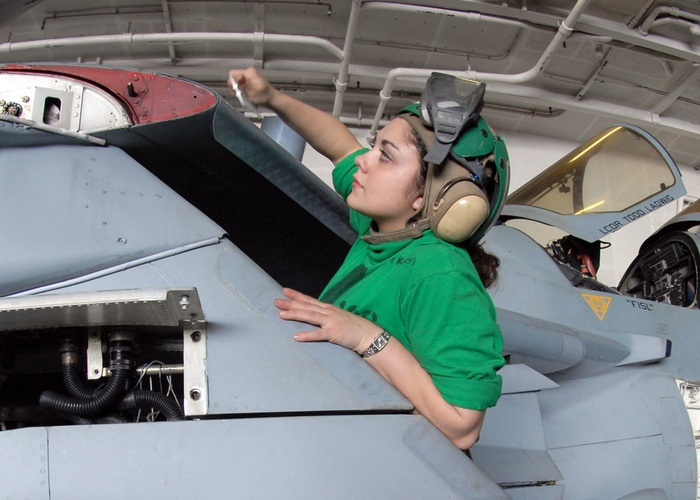Light Attack Aircraft: Beechcraft’s T-6 Texan II vs. Embraer’s Super Tucano
Sometimes tradition is right because it works. Even as fighters reach their sixth distinct generation, primary trainers remain fairly unswayed. A single-engine turboprop is the perfect blend of high performance, ease of operation, durability, and efficiency to remain the champ of primary trainers. But far from one trick ponies, these primary trainers are proving to be highly versatile machines capable of performing real-world missions along with their training practicum. Two of the leading designs in the world are the Beechcraft T-6 Texan II, and the Embraer Super Tucano. Let’s take a look at what these aircraft have in common, what sets them apart, and what the future holds for these two designs.
Design and Development
First, let’s take a look at the design and development of these two aircraft.
Beechcraft T-6 Texan II
To understand where we are, let’s take a look at where we have been. Before implementing the T-6, the U.S. Air Force had used the Cessna T-37 Tweet, a light, twin-jet primary trainer, for many years. The Tweet was a respectable platform, serving 52 continuous years as the USAF primary trainer. In fact, it seems counter intuitive: why the transition from a jet to a turboprop when the jet served for five decades? A couple of good reasons: technological advances, efficiency, and cost. In the 1950s, when the Tweet was born, turboprops were in their infancy. The USAF wanted a jet trainer, so they went with a jet. However, modern turboprops are extremely high-performance and use a fraction of turbojets' fuel while preserving most of the performance. The T-6 was not an organic design but a collaboration with Swiss airplane maker Pilatus. The T-6 was developed from their successful PC-9 primary trainer, designed in the early 1980s.

Embraer Super Tucano
Brazillian aircraft manufacturer Embraer was working on a tandem trainer around the same time as the Beechcraft/Pilatus joint effort. Their original effort in the 1980s was using a Garrett turboprop, but was shelved because the Brazilian Air Force was not in the market for a trainer. Fast-forward a few years, and the same airframe was modified for the PT6A-68C.

Performance
These two aircraft appear very similar, but the Super Tucano is actually much larger and heavier. It is also equipped with the PT6A-68C, which is the 1,604 shp version of the engine.
Beechcraft T-6 Texan II
The Texan is a high-performance single with a Vne of 364 knots, with a cruise of around 320. It is also fairly large, with an empty weight of about 4,700 lbs and a gross weight of 6,500 lbs. Equipped with the 1,100shp PT6A-68, the T-6 can easily perform all contact maneuvers that military trainers call on it with ample horsepower in reserve.
Embraer Super Tucano
The Super Tucano is a big aircraft compared to the Texan. Its empty weight is over the maximum gross weight of the Texan II, and the maximum gross weight for the Tucano is over 11,900 lbs. Also, it’s about three feet longer and four feet wider than the Texan. The Super Tucano is a much larger aircraft with a max gross nearly double the Texans. But, the A-29 wasn’t made to be a trainer but to conduct light attack missions.

Training
Here’s where the two aircraft really tend to branch off. The Texan is purpose-designed just for training, whereas the A-29 is a light ground attack aircraft used for training.
Beechcraft T-6 Texan II
Derived from the Pilatus PC-9, which is a dedicated trainer, the Beechcraft T-6 Texan II is pure trainer. And it is a great platform for it. The Texan is made with the student in mind. Using a compensation system designed to mimic jet operations, the yaw is automatically corrected so the pilots can focus on flying the airplane rather than worrying about P-factor. The reasoning behind this is that almost all student pilots will go on to fly jets (C-130s being the only widely used turboprop in the Air Force). The entire point was to emulate a jet but save costs by opting for a turboprop. After 52 continuous years of use with the Tweet, the USAF preference was on a jet trainer, and Texan has delivered.
Embraer Super Tucano
The Super Tucano is not really a trainer. It is a ground attack aircraft pulling double duty as a trainer. With that said, it is well-suited for the task. The Tucano is built like a tank. It is a robust aircraft that was specifically designed for Amazon. Could it be used as a primary trainer? Probably. But it isn’t. It is used for light attack and observation roles, which it was designed for, and it does a great job.
Weapons
Now we are getting to the fun stuff. Both aircraft are weapons-capable, although the Super Tucano was built for the role; the Texan is more of an ad hoc mission.
Beechcraft T-6 Texan II
The Charlie model and then the AT-6B Wolverine are the only models that are equipped with hard points for weapons. The Texan has no integral weapons, so all weapons must be loaded on hard points. This could include gun pods, bombs, or rockets. The AT-6B is configured for the battlefield with the same mission computer as the A-10C, laser designator, laser illuminator, and more.

Embraer Super Tucano
Since the Super Tucano is made for light ground attack, it is well equipped for it. Armed with a pair of FNH .50 internally mounted machine guns holding 250 rounds per gun, the Tucano is already well-equipped for the fight.
But it can carry a full complement of hard-point mounted weapons as well, including
- Rocket pods
- Rockets on rails
- Bombs
- Guided munitions
- Gun pods
- And more

Cost and Maintenance
The main reason why turboprops have become so popular as we move into further generations of fighter and attack aircraft is that the performance has become increasingly more jet-like but without the jet aircraft maintenance and operations bills. Again, the T-6 Texan II uses well under half of the fuel of the T-37 Tweet, not to mention half the cost in maintenance and upkeep.
Beechcraft T-6 Texan II
According to the Air Force Comptroller’s Office, the T-6 Texan has an hourly operating cost of roughly $2,235 per flight hour. This is an estimate, and every single aircraft is different, but this includes all maintenance and repairs, anticipated overhaul costs for the engine, fuel, and any other associated costs.
Embraer Super Tucano
While it is hard to nail down exact operating costs, especially for an aircraft that is not such a large part of the U.S. fleet, the best estimates for the Super Tucano are around $1,000 per flight hour, although it certainly has gone up since 2017. The hourly operating cost of the Super Tucano closely parallels that of the Texan II. They operate a similar engine, and parts and accessories for the airframe will not be much different either. Overall, it also operates somewhere between $1,500-$2,500 per flight hour. Again, there are a lot of variables, and no two aircraft are the same.
Final Thoughts
Both the Beechcraft T-6 Texan II and the Embraer Super Tucano/A-29C are proving to be excellent assets for every country deployed. The Texan is gaining ground and is the preeminent primary military trainer in the world. The Super Tucano is finding usefulness all over the globe in low-density operations where services are sparse, but mission execution is critical.
Greenwood Aerospace is your trusted partner in setting up a reliable parts supply chain for your T-6 Texan II or Embraer Super Tucano operations. Whatever your scope of operation or needs, call us to get started or start a quote, and we’ll take it from there!


.svg)


.png)


